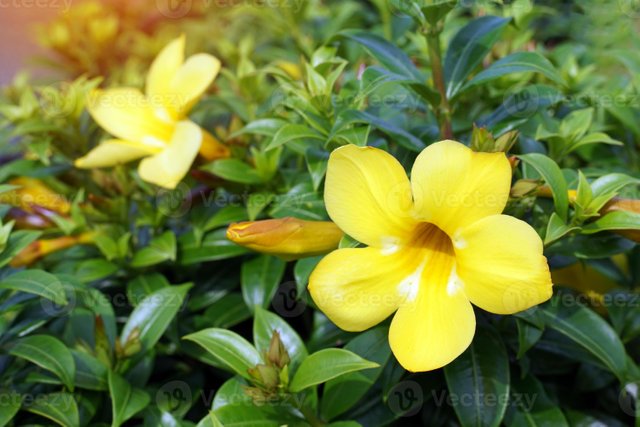Allamanda :
Allamanda stands out as a very beautiful flowering plant. It is admired for its looks and also for its medicinal uses. Allamanda can't handle frost. This makes outdoor growing impossible in cooler climates. As a houseplant or in a greenhouse, it grows well.

Allamanda is an evergreen plant. It lives for many years and belongs to the Kutrovye family. The plant is like a vine or shrub. Its stems bend easily. Allamanda came from the American tropics. Key features of the plant include size.
As a shrub, it can reach up to 90 cm tall. As a vine, it grows taller. Its leaves are long and pointed. They grow in pairs and have a shiny, green color. The flowers are tube-shaped with five petals. Flowers range from 8 to 12 cm in size.

They come in deep, bright colors. These colors include pink, yellow, cream, and white. The stems contain a milky white liquid. This liquid makes the plant poisonous.
Many types of Allamanda exist. Florists often grow a few common kinds. One is Allamanda terry, its flowers look like roses. The petals twist and have a ruffled look. Allamanda laxative is a common vine. It grows very tall, up to several meters.
Its stems are bare except for fluff at the base. The leaves are large and oval-shaped. The flowers are yellow with gold. They have a white base and are tube-shaped. Many versions of this type are grown. Allamanda noble looks like Allamanda laxative.

Its leaves are shaped like spear points. Its stems are reddish. The leaf tops are pointed. The bottoms are fuzzy. The flowers are large and yellowish. They have a light scent.
Allamanda Henderson grows fast with thick leaves. Its leaves are tough and grouped in threes or fours. The flowers are orange with yellow and light lines.